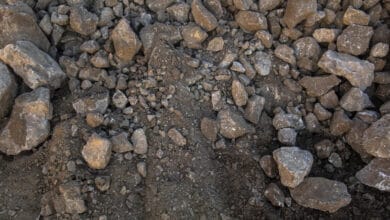Patriot Resources completes high-resolution ground magnetics and I.P. surveys at Kitumba

Patriot Resources Limited announces the successful completion of high-resolution ground magnetics and I.P. surveys at Target B1 within its 80% owned Kitumba 27715 Project, Zambia. Geophysical surveys were initiated after the discovery of a polymetallic Cu-Zn-Pb mineralised system during Phase 1 trenching. Gold assays from Phase 1 trenching are still pending and are expected this quarter, providing additional upside to this already prospective target. The latest geophysical work was designed to refine and extend the mineralised footprint ahead of further trenching and drill targeting. The results confirm a significantly larger and more complex polymetallic system, strengthening the overall scale potential at Kitumba.
Executive Chairman, Hugh Warner, commented: “This is an excellent step forward at Kitumba. The geophysics has materially expanded the mineralised footprint and confirmed we are dealing with a much larger polymetallic system open in all directions, giving us strong confidence heading into Phase 2 trenching and subsequent drill planning. With gold assays still pending from Phase 1, we believe there is meaningful upside still to come at Target B1.”
Work completed
Ground magnetics and I.P. surveys were successfully conducted on a 30-hectare block covering Target B1. A total of 11.4-line Km at 25m spacing was surveyed using a G5 Geotron magnetometer, oriented East to West. For IP, a total of 2.1-line Km (6 lines) was surveyed at 10m spacing for both chargeability and resistivity. High-resolution magnetics and I.P. data was processed immediately after using advanced geoscientific software.
Results & interpretation
The surveys mapped several low-magnetic, high-chargeability anomalies associated with sulphide mineralisation, coinciding with moderate-high resistivity zones. This combination of geophysical anomalies aligns with the Phase 1 trenches (Zone 1), where a Cu-Zn-Pb polymetallic system was identified.
Three main high chargeability zones (2.4-3.5mV/V) were mapped during survey approximately 300-400m strike, 30-40m wide and down to a depth of 100m, orientated NW-SE and N-S. High chargeability zones are normally associated with disseminated sulphides. This is not a surprise as we have seen visible sulphides (chalcopyrite) from the Phase 1 trench work, see announcement dated 30 October 2025.
Low magnetic structures are usually associated with shear zones and alteration which is a good indicator for mineralisation. Moderate to High resistivity is often caused by silicification and quartz veins, which are structurally controlled and can host mineralisation, a system which we also observed from the previous trench work. Strongly limonitic, carbonated, and silicified zones were mapped across several trenches with associated copper mineralisation.
High chargeability anomalies were identified to the North, East and West boundaries of the surveyed block, signalling extension and possibly secondary parallel mineralised structures. Several high resistivity and high chargeability anomalies went down to a depth of 100m which is what the survey method could effectively manage. There remains a high possibility that these zones could extend below 100m. These interesting anomalies will need to be followed up by extension of the geophysical survey block and further trenching to refine drilling targets.
Next steps
- Phase 2 trenching to ground-truth key anomalies
- Extension of ground magnetics and I.P. survey grid to test strike and depth potential








